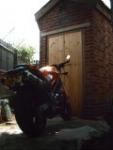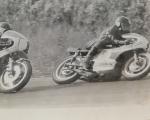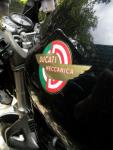|
Thanks guys for all the concern, advice, suggestions etc. I genuinely feel the force is with me.
Situation update, started yesterday on my plan to make a press and spent half an hour looking round for suitable scrap metal, I really wanted 1” x 3/8” bright mild steel with nice machined edges which I knew I had somewhere. When I eventually found it, I had a change of heart realising that making this press was going to take most of the day but more particularly I did not have any steel with nice machined edges the right size for the compressing bit of the tool I had designed in my head.
The previous evening, I scoured the internet for crimping tools for AMP connectors but did not see anything outstandingly better than my ratchet type or Luddite’s version.
My thought process was - other people manage why can’t I? I must be doing something wrong.
Against this was the prospect of having to make about 150 connections and each taking about an hour with about 4 failed attempts before a successful termination was made so a fool-proof tool would pay dividends in the long run.
I thought I would practice on a cable separate from the main loom so any repeated cock ups would not mean replacing cables already cut and attached to the main loom. The speedo hall sensor cable was chosen and I will need 2 x 3 way connectors for this cable (which runs from the back brake hanger plate to the instruments in front of the top yoke), one situated just about where the rear suspension top pivot sits and the other just behind the steering head.
Starting from first principles I examined the connector closely and I discovered there are two possible paths a cable can take when it is introduced into one side of the connector, the easy path and a more difficult path which exerts some slight friction onto the cable sheath. Yesterday, I did not notice this and just pushed the wires in until they popped out the other side, all three, obviously by chance, took the easy path. Yesterday’s efforts were damned from that moment on, as often happens in life the righteous path is the more difficult one.
I was oddly heartened by this and eventually made both sides of the steering head connector within 2 hours with about 6 fails. What I learned was:
1. First make sure the boot is on the cable, any heat shrink you want to use is also present and the tiny little silicone bellows are on each cable – common sense
2. Pass the wires through the right part of the connector – obvious really when you know there are two possible paths
3. Strip the wires after they are installed through the connector – common sense
4. Trim the tinned connector, particularly the tangs that grip the insulation and the tangs next along so that there is going to be no overlap when they are crimped. - hard won experience
5. Pre-condition the shortened tangs on the tinned connector so the stripped wire passes through a tunnel not a channel – hard won experience
6. Align the tinned connector with the square hole it has to be pushed into before crimping so there is no need to twist the cable to get it to enter the plastic connector, particularly important for the female connector and for more than 2 way connectors – common sense
7. If soldering as well as crimping, do not pre- tin the cable end before crimping and use the bare minimum of solder – common sense
8. Dress the final crimped connection for squareness of hole fit and longitudinal alignment with snipe nose pliers – do it sparingly
I can now make a connection successfully in about 5 minutes using Luddite’s crimpers. This will be my next 10 hours bike time – not an enthralling prospect and no real photo opportunities – further report next week
|














 Roast Beef Monster!
Roast Beef Monster!



 Linear Mode
Linear Mode

